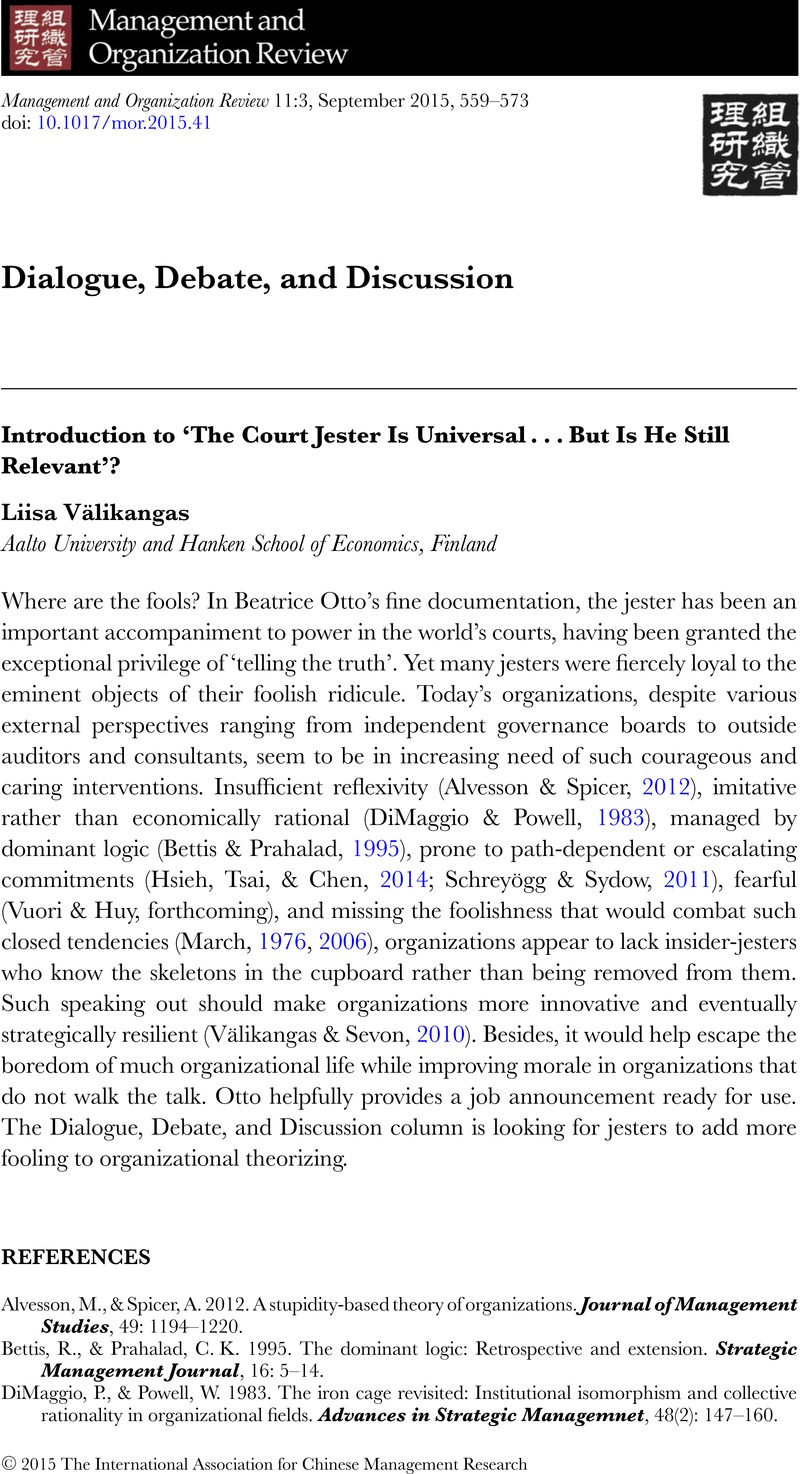Crossref Citations
This article has been cited by the following publications. This list is generated based on data provided by Crossref.
Clegg, Stewart
Cunha, Miguel Pina e
Rego, Arménio
and
Berti, Marco
2022.
Speaking truth to power: The academic as jester stimulating management learning.
Management Learning,
Vol. 53,
Issue. 3,
p.
547.
Sender, Anna
and
Mormann, Hannah
2025.
It Takes a Fool to Remain Sane: How and When HR Executives Use Jesting Techniques to Trickle Up Paradoxical Tensions.
Journal of Management Inquiry,
Vol. 34,
Issue. 2,
p.
186.
Hart, Efraim J.
de Heer-Koster, Merel H.
van der Harst, Maria
Browne, Joyce L.
and
Scheele, Fedde
2025.
Key tips to shift student perspectives through transformative learning in medical education.
BMC Medical Education,
Vol. 25,
Issue. 1,



